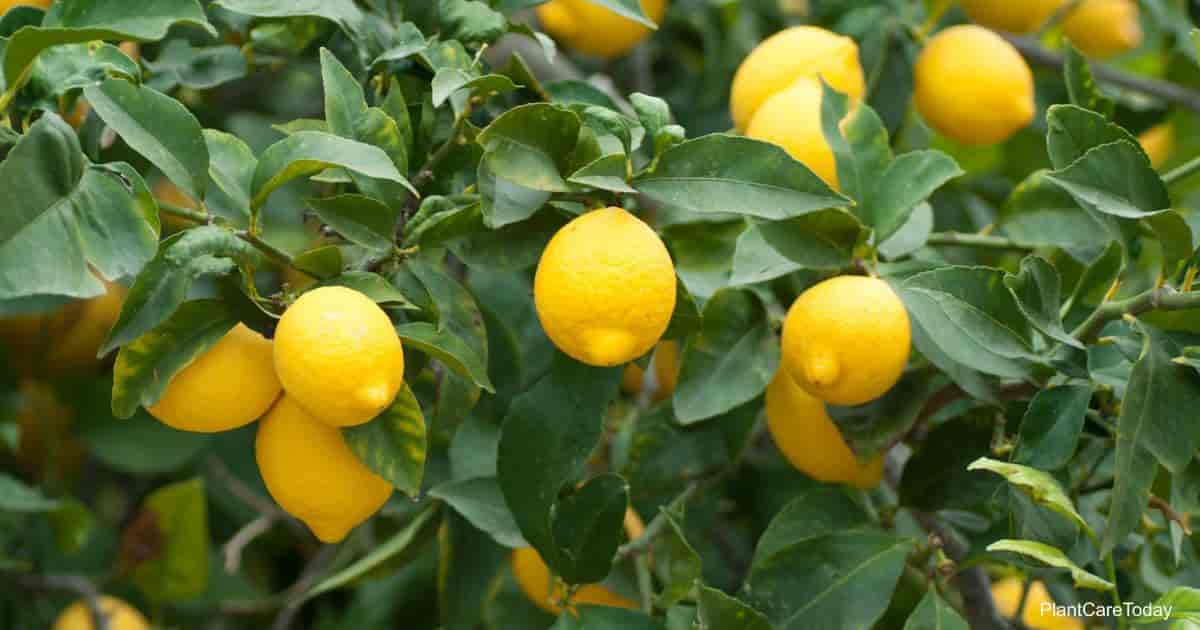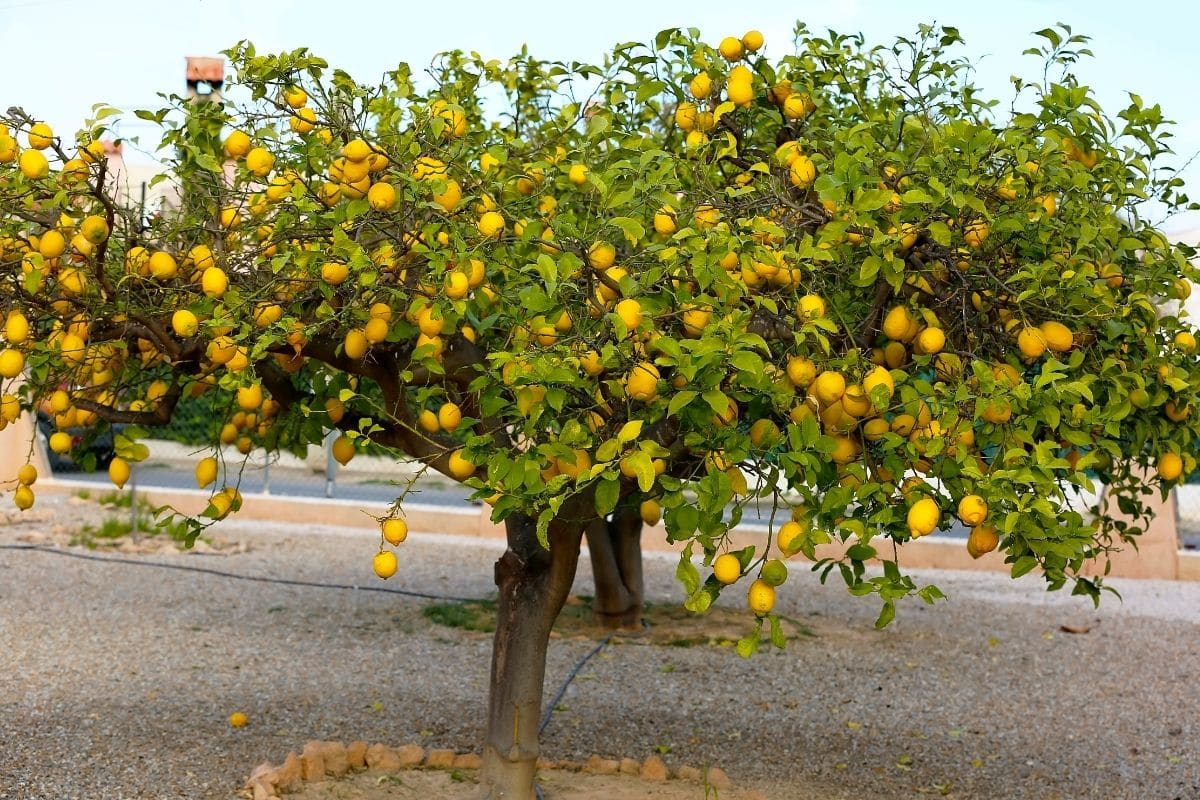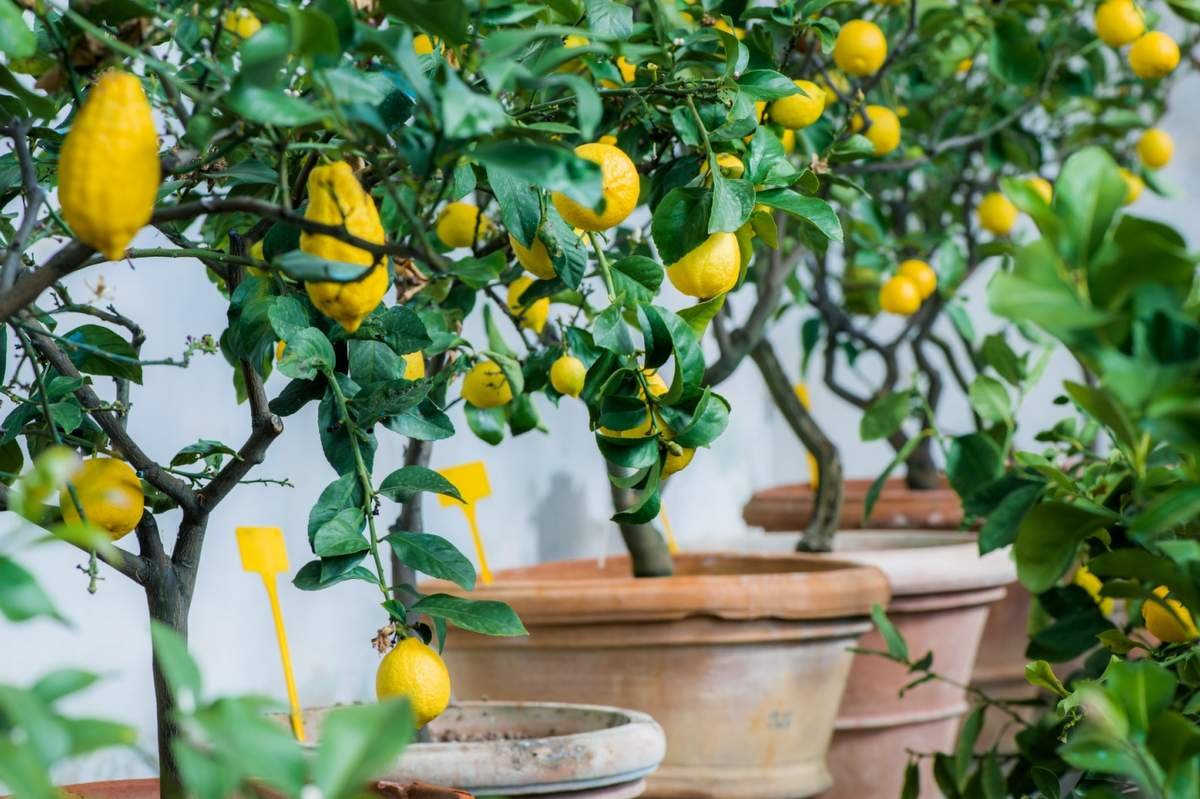Home>Gardening Techniques>DIY Projects>How To Bonsai A Lemon Tree


DIY Projects
How To Bonsai A Lemon Tree
Modified: February 9, 2024
Learn how to create a stunning bonsai lemon tree with this easy-to-follow DIY project. Transform your garden and impress your guests with your green thumb skills!
(Many of the links in this article redirect to a specific reviewed product. Your purchase of these products through affiliate links helps to generate commission for Chicagolandgardening.com, at no extra cost. Learn more)
Table of Contents
- Introduction
- Step 1: Selecting a Suitable Lemon Tree
- Step 2: Pruning and Shaping Techniques
- Step 3: Choosing the Right Container
- Step 4: Planting and Potting the Lemon Tree
- Step 5: Proper Watering and Fertilizing
- Step 6: Creating an Optimal Growing Environment
- Step 7: Regular Maintenance and Care
- Step 8: Troubleshooting Common Issues
- Conclusion
Introduction
Welcome to the wonderful world of DIY bonsai projects! If you have ever dreamed of having your very own lemon tree bonsai, you have come to the right place. Bonsai is the art of growing small, miniature trees in containers, and it has been practiced for centuries. It requires patience, skill, and a deep appreciation for nature’s beauty.
In this comprehensive guide, we will take you through the step-by-step process of creating and maintaining a stunning lemon tree bonsai. You will learn about selecting the right lemon tree, pruning and shaping techniques, choosing the optimal container, and providing the right care for your bonsai to flourish.
Through careful cultivation, you can transform an ordinary lemon tree into a captivating work of art that will bring joy and serenity to your home or garden. So, whether you are a seasoned bonsai enthusiast or a beginner with a green thumb, let’s dive in and discover the secrets of bonsai-ing a lemon tree!
Step 1: Selecting a Suitable Lemon Tree
When it comes to bonsai-ing a lemon tree, the first and most important step is selecting the right tree to work with. Here are some key factors to consider:
- Size: Look for a lemon tree sapling that is small and compact, preferably one that is already around 2 to 3 years old. This will make it easier to shape and maintain as a bonsai.
- Variety: There are different varieties of lemon trees to choose from, such as Meyer lemon or Eureka lemon. Consider the growth habit, leaf size, and fruit characteristics of each variety to find one that matches your aesthetic preferences.
- Health: Ensure that the tree you choose is healthy and free from pests or diseases. Inspect the leaves for any signs of discoloration or wilting, and check the roots to make sure they are not root-bound.
- Branch Structure: Examine the branches of the lemon tree and look for a well-balanced structure with multiple branches emerging from different points along the trunk. This will provide a solid foundation for shaping your bonsai.
Remember, bonsai is a long-term commitment, so choose a lemon tree that you resonate with and will enjoy working on for many years to come.
Step 2: Pruning and Shaping Techniques
Pruning and shaping are essential steps in creating a beautiful lemon tree bonsai. Here are some techniques to help you achieve the desired form:
- Branch Selection: Start by identifying the primary branches that will form the basic structure of the bonsai. Choose branches that are well-positioned, have good movement, and are in proportion to the overall tree.
- Pruning: Use sharp, clean pruning shears to remove any unwanted branches, deadwood, or excessive foliage. Pay attention to maintaining balance and symmetry as you prune.
- Wiring: Wiring is a technique used to shape the branches of the bonsai. Wrap the wire gently around the branch, following its natural curve, and create slight bends to achieve the desired shape. Be careful not to wire too tightly to avoid damaging the tree.
- Pinching: Pinching is a method of encouraging the growth of new shoots and maintaining the bonsai’s desired shape. Using your fingers, pinch off the tips of new growth to stimulate back budding and promote branch ramification.
Remember to step back and assess your progress regularly. Bonsai is an art of patience, so take your time and make adjustments as needed. It’s important to strike a balance between training the tree to your desired shape and respecting its natural growth tendencies.
Step 3: Choosing the Right Container
The container you choose for your lemon tree bonsai is not just a decorative element; it plays a crucial role in the overall health and development of your bonsai. Here are some factors to consider when selecting a container:
- Size: The size of the container should be in proportion to the size of your bonsai. It should provide enough space for the root system to grow without becoming too cramped.
- Drainage: Ensure that the container has adequate drainage holes to prevent water from pooling. Good drainage is essential for the health and vitality of your bonsai.
- Material: Bonsai containers are available in various materials, including ceramic, plastic, and clay. Each material has its advantages and disadvantages. Ceramic containers are popular for their durability and aesthetic appeal, while plastic containers are lightweight and easy to move. Clay containers allow for better breathability of the roots.
- Style: Consider the style and design of the container, as it should complement the overall aesthetic of your bonsai. Traditional rectangular or oval containers are commonly used, but you can also explore other shapes and styles to add a unique touch.
Remember that the container should provide a stable and secure base for your lemon tree bonsai while allowing for proper water drainage. Take your time to find the perfect container that suits your bonsai’s needs and enhances its visual appeal.
Step 4: Planting and Potting the Lemon Tree
Proper planting and potting are crucial steps in ensuring the healthy growth and development of your lemon tree bonsai. Follow these guidelines to successfully plant and pot your bonsai:
- Preparing the Soil: Create a well-draining soil mix by combining bonsai soil, such as a mix of akadama, pumice, and lava rock, with organic material. This will provide good aeration and drainage for the roots.
- Preparing the Container: Before potting, ensure that the container has been thoroughly cleaned to remove any dirt or debris. Place a layer of mesh or a small piece of window screen over the drainage holes to prevent soil from escaping.
- Positioning: Position the tree in the center of the container, making sure that the nebari (root flare) is visible at or slightly above the soil line. Gently spread out the roots to encourage even growth.
- Potting: Carefully fill the container with the prepared soil mix, ensuring that it fills in the gaps between the roots. Press the soil lightly to remove any air pockets.
- Watering: Water the freshly potted bonsai thoroughly until water comes out of the drainage holes. This will help settle the soil and ensure proper hydration for the tree.
After potting, place your lemon tree bonsai in a location that provides the right amount of sunlight, usually a spot with bright, indirect light. Regularly monitor the moisture levels of the soil and adjust your watering routine accordingly.
Step 5: Proper Watering and Fertilizing
Watering and fertilizing your lemon tree bonsai are essential for its growth and overall health. Here are some tips to ensure proper hydration and nutrient supply:
- Watering: Bonsai trees have specific watering needs, and finding the right balance is crucial. Check the moisture level of the soil by inserting your finger about an inch deep. If it feels dry, it’s time to water your bonsai. Water thoroughly until water drains out of the bottom of the container, ensuring that all parts of the root system receive hydration. Avoid overwatering, as this can lead to root rot.
- Fertilizing: Bonsai trees require regular fertilization to replenish nutrients in the soil. Use a balanced, slow-release fertilizer specifically formulated for bonsai. Follow the recommended application rates and frequency to avoid overfeeding. Fertilize during the growing season, typically from spring to fall, and reduce or stop fertilization during winter when the tree is dormant.
- Monitoring: Regularly monitor the health of your bonsai by observing its foliage color, growth patterns, and overall vitality. Adjust your watering and fertilizing routine as needed based on the specific needs of your lemon tree bonsai.
Remember that every bonsai is unique, and factors such as temperature, humidity, and sunlight can affect the watering and fertilizing requirements. Take the time to understand your bonsai’s needs and provide it with the necessary care to thrive.
Step 6: Creating an Optimal Growing Environment
The success of your lemon tree bonsai depends on creating an optimal growing environment that meets its specific needs. Here are some key factors to consider:
- Light: Lemon trees thrive in bright, indirect sunlight. Place your bonsai in a location that receives at least 6 hours of filtered sunlight per day. Avoid placing it in harsh, direct sunlight as it can scorch the leaves.
- Temperature: Lemon trees prefer moderate temperatures, ideally between 60°F (15°C) and 80°F (27°C). Protect your bonsai from extreme cold or hot temperatures, which can cause stress and affect its growth.
- Humidity: Lemon trees appreciate moderate to high humidity levels. To increase humidity, you can mist the foliage regularly or place a tray filled with water near the bonsai. Avoid placing the bonsai near sources of dry air, such as air conditioning vents.
- Air Circulation: Good air circulation is important to prevent stagnant air and reduce the risk of fungal diseases. Ensure that your bonsai is placed in an area with adequate air movement.
- Protection from Pests: Regularly inspect your lemon tree bonsai for pests such as aphids, scale insects, or spider mites. If you notice any signs of infestation, treat your bonsai with organic or chemical insecticides to control the pests.
By providing the right growing conditions, you will create a thriving environment for your lemon tree bonsai, allowing it to develop into a healthy and beautiful miniature tree.
Step 7: Regular Maintenance and Care
Maintaining and caring for your lemon tree bonsai is an ongoing process that requires regular attention and dedication. Here are some essential tasks to keep your bonsai healthy:
- Pruning: Regular pruning is necessary to maintain the shape and size of your bonsai. Trim back any overgrown branches, remove dead or damaged foliage, and maintain balance within the tree’s structure.
- Wiring: As your bonsai grows, you may need to reposition or remove the wiring to prevent it from cutting into the branches. Monitor the wiring regularly and make adjustments as necessary.
- Leaf Care: Keep an eye on the health of the leaves. Prune or pluck off any yellowed or diseased leaves to maintain the overall vigor of the tree.
- Repotting: Every 2-3 years, carefully remove your bonsai from its container and prune the roots. Repot it in fresh bonsai soil to provide adequate nutrients and prevent root confinement.
- Seasonal Care: Adjust your watering and fertilizing routine based on the seasonal needs of your lemon tree bonsai. Reduce water and fertilizer during winter dormancy and increase them during the active growth period.
- Protection from Extreme Conditions: Shield your bonsai from extreme weather conditions, such as frost or intense heat. If necessary, bring it indoors or provide additional protection to ensure its well-being.
Regular maintenance and care will help your lemon tree bonsai flourish and thrive. By staying attentive to its needs and taking proactive measures, you can enjoy the beauty and serenity of your bonsai for years to come.
Step 8: Troubleshooting Common Issues
While caring for your lemon tree bonsai, you may encounter some common issues. Here are a few troubleshooting tips:
- Yellowing Leaves: Yellowing leaves can be a sign of overwatering, nutrient deficiencies, or pest infestations. Adjust your watering schedule, check the soil moisture, and ensure proper fertilization. Treat any pests promptly.
- Leaf Drop: Excessive leaf drop can occur due to environmental changes, inadequate sunlight, improper watering, or pests. Evaluate the conditions and adjust as necessary. Ensure your bonsai receives the right amount of light and moisture.
- Pest Infestations: If you notice pests such as aphids, scale insects, or spider mites on your bonsai, treat them with appropriate insecticides. Regularly inspect your bonsai to catch and address infestations early.
- Fungal Diseases: Improper watering practices and poor air circulation can lead to fungal diseases. Ensure good drainage, avoid overwatering, and provide adequate air circulation to prevent fungal growth. Treat any fungal infections with appropriate fungicides.
- Root Rot: Overwatering or inadequate drainage can cause root rot. If you notice a foul smell or mushy roots, it’s a sign of root rot. Trim off affected roots, repot the bonsai in fresh soil, and adjust your watering practices to prevent further root rot.
Remember, each bonsai is unique, and troubleshooting may require some trial and error. Stay attentive to your tree’s needs, take timely action, and seek advice from experienced bonsai enthusiasts or professionals when needed.
Conclusion
Creating and caring for a lemon tree bonsai can be a rewarding and fulfilling journey. By following the steps outlined in this comprehensive guide, you can transform an ordinary lemon tree into a stunning work of art that brings beauty and tranquility to your home or garden.
From selecting the right tree and pruning it with precision, to choosing the perfect container and providing optimal care, each step plays a crucial role in the success of your bonsai. Remember to be patient, as bonsai is a long-term commitment that requires time, dedication, and a deep appreciation for the intricacies of nature.
Throughout the process, don’t be afraid to get creative and put your personal touch on your lemon tree bonsai. Experiment with different pruning styles, wiring techniques, and container choices to make your bonsai truly unique and reflective of your individual style.
In addition to the physical aspects of bonsai care, always remember to connect with your bonsai on a deeper level. Observe its growth, understand its needs, and develop a sense of harmony with the tree. Bonsai is not just a gardening hobby; it is an art form that allows us to meditate and find solace in nature’s beauty.
So, dive into the world of DIY bonsai projects and embark on the journey of bonsai-ing a lemon tree. Whether you are a beginner or an experienced enthusiast, the process of nurturing and shaping your own bonsai is a truly fulfilling and rewarding experience.



